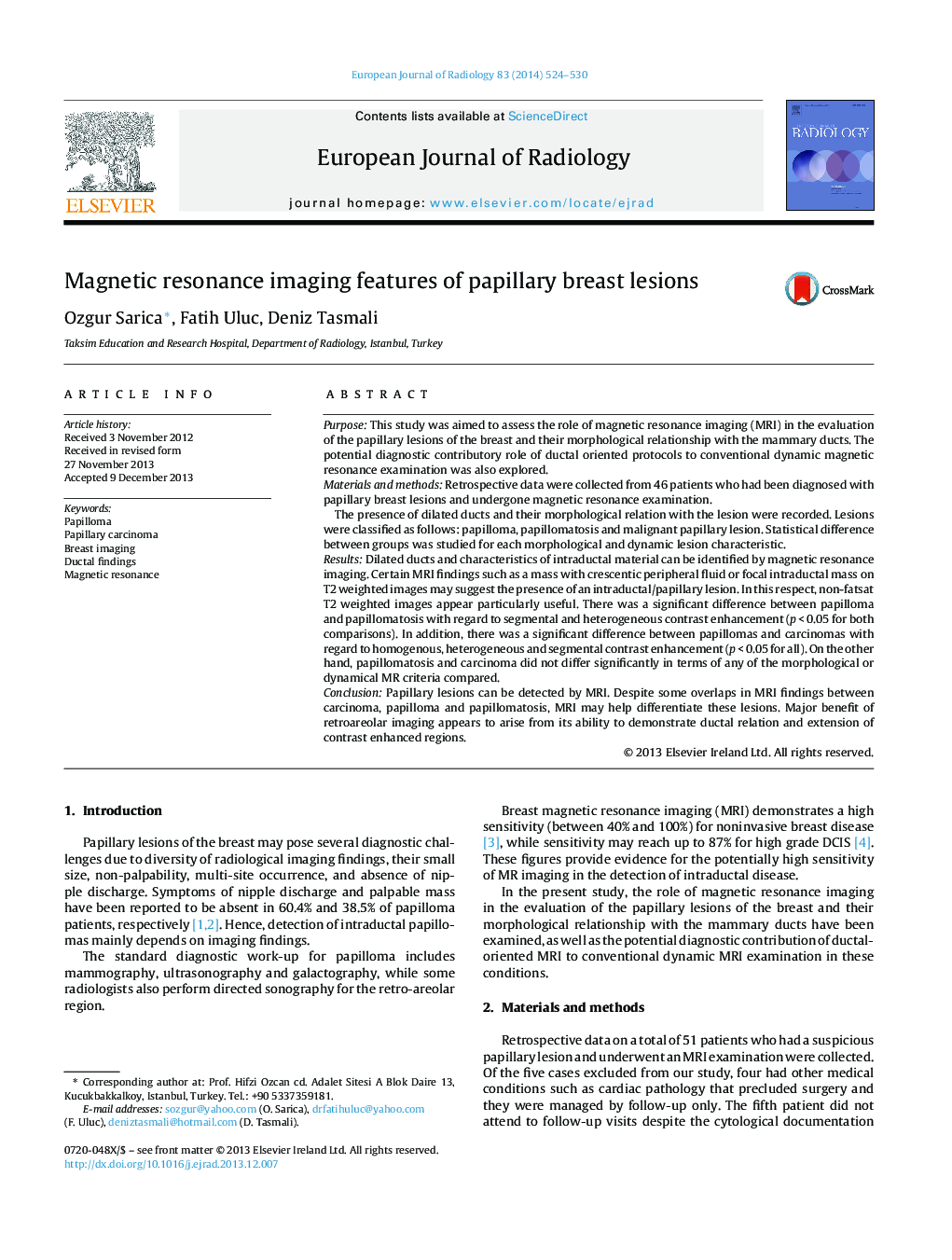| کد مقاله | کد نشریه | سال انتشار | مقاله انگلیسی | نسخه تمام متن |
|---|---|---|---|---|
| 4225328 | 1609768 | 2014 | 7 صفحه PDF | دانلود رایگان |
PurposeThis study was aimed to assess the role of magnetic resonance imaging (MRI) in the evaluation of the papillary lesions of the breast and their morphological relationship with the mammary ducts. The potential diagnostic contributory role of ductal oriented protocols to conventional dynamic magnetic resonance examination was also explored.Materials and methodsRetrospective data were collected from 46 patients who had been diagnosed with papillary breast lesions and undergone magnetic resonance examination.The presence of dilated ducts and their morphological relation with the lesion were recorded. Lesions were classified as follows: papilloma, papillomatosis and malignant papillary lesion. Statistical difference between groups was studied for each morphological and dynamic lesion characteristic.ResultsDilated ducts and characteristics of intraductal material can be identified by magnetic resonance imaging. Certain MRI findings such as a mass with crescentic peripheral fluid or focal intraductal mass on T2 weighted images may suggest the presence of an intraductal/papillary lesion. In this respect, non-fatsat T2 weighted images appear particularly useful. There was a significant difference between papilloma and papillomatosis with regard to segmental and heterogeneous contrast enhancement (p < 0.05 for both comparisons). In addition, there was a significant difference between papillomas and carcinomas with regard to homogenous, heterogeneous and segmental contrast enhancement (p < 0.05 for all). On the other hand, papillomatosis and carcinoma did not differ significantly in terms of any of the morphological or dynamical MR criteria compared.ConclusionPapillary lesions can be detected by MRI. Despite some overlaps in MRI findings between carcinoma, papilloma and papillomatosis, MRI may help differentiate these lesions. Major benefit of retroareolar imaging appears to arise from its ability to demonstrate ductal relation and extension of contrast enhanced regions.
Journal: European Journal of Radiology - Volume 83, Issue 3, March 2014, Pages 524–530
